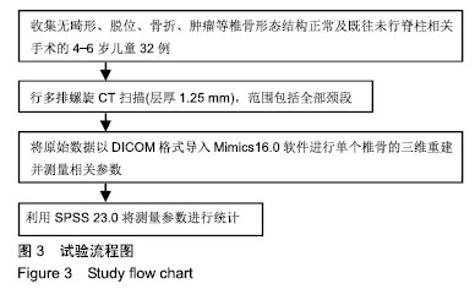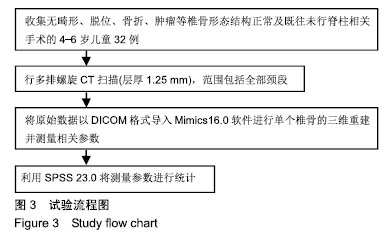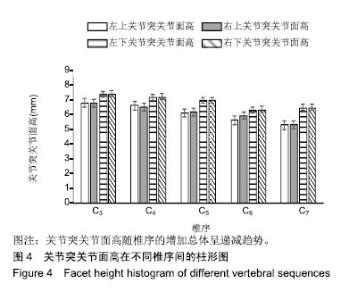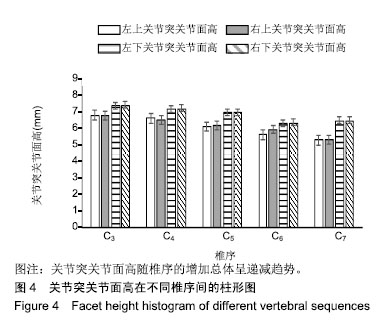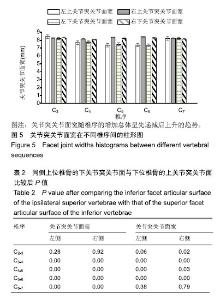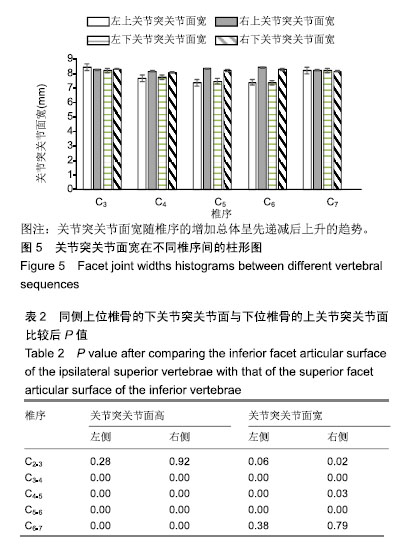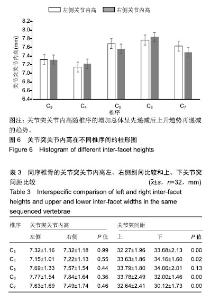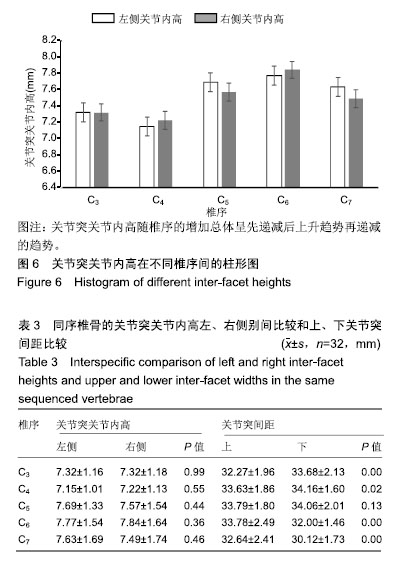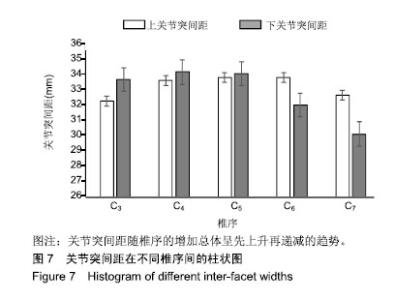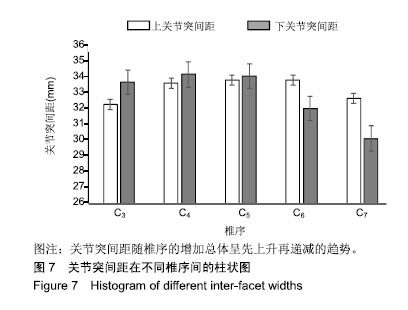| [1]Bogduk N, Marsland A. The cervical zygapophysial Joints as a source of neck pain. Spine.1988;13(6):610-617.[2]Barnsley L, Lord S, Bogduk N. Comparative local anaesthetic blocks in the diagnosis of cervical zygapophysial joint pain. Pain. 1993;55(1): 99-106. [3]Winkelstein BA. Nightingale RW, Richardson WJ, et al. The cervical facet capsule and its role in whiplash injury: a biomechanical investigation. Spine. 2000; 25(10): 1238-1246.[4]Barnsley L, Lord SM, Wallis BJ, et al. The prevalence of chronic cervical zygapophysial joint pain after whiplash. Spine. 1995; 20(1): 20-25. [5]Bogduk N. On cervical zygapophysial joint pain after whiplash.Spine. 2011; 36(25): 194-199. [6]Lord SM, Barnsley L, Wallis BJ, et al. Chronic cervical zygapophysial joint pain after whiplash.A placebo-controlled prevalence study. Spine,1996;21(15):1737-1744.[7]Gao X, Yang Y, Liu H, et al.Cervical disc arthroplasty with Prestige- LP for the treatment of contiguous 2-level cervical degenerative disc disease.Medicine,2018;97(4):1-6.[8]王星,史君,张少杰,等.三维图像测量青少年颈椎钩突的形态特征[J].中国组织工程研究与临床康复,2011,15(30):5587-5590.[9]Knapik DM, Abola MV, Gordon ZL, et al. Differences in cross-sectional intervertebral foraminal area from c3 to c7. Global Spine J. 2018;8(6):600-606.[10]Jaumard NV, Welch WC, Winkelstein BA. Spinal Facet Joint Biomechanics and Mechanotransduction in Normal, Injury and Degenerative Conditions. J Biomech Eng. 2011;133(7): 1-31.[11]Wang Q, Wang XT, Zhu L, et al. Thoracic inlet parameters for degenerative cervical spondylolisthesis imaging measurement. Med Sci Monit. 2018;24:2025-2030.[12]Raniga SB, Menon V, Al Muzahmi KS, et al. MDCTof acute subaxial cervical spine trauma:a mechanism-based approach. Insights Imaging. 2014;5(3): 321–338. [13]Rong X, Liu Z, Wang B, et al. Relationship between facet tropism and facet joint degeneration in the sub-axial cervical spine. BMC Musculoskelet Disord. 2017;18: 86-93.[14]Kunkel ME, Schmidt H, Wilke HJ. Prediction of the human thoracic and lumbar articular facet joint morphometry from radiographic images. J Anat. 2011;218(2): 191–201.[15]Tan SH, Teo EC, Chua HC. Quantitative three-dimensional anatomy of cervical, thoracic and lumbar vertebrae of Chinese Singaporeans. Eur Spine J. 2004;13(2): 137-146.[16]席新华,吴强,唐华军,等.成人下颈椎椎体与关节突关节倾角的X射线测量数据[J].中国组织工程研究与临床康复,2009,13(4):662-666.[17]刘观燚,徐荣明,马维虎,等.下颈椎关节突关节的解剖学测量与经关节螺钉固定的关系[J].中国脊柱脊髓杂志,2007,17(2):140-144.[18]曾辉,邹德威,吴继功,等.下颈椎关节突关节的影像学观测及其临床意义[J].中国脊柱脊髓杂志,2012,22(1):59-64.[19]Denis F.The three columnspine and its significance in the classification of acate thoracolumbar spine injure.Spine.1983;8(8): 817-831.[20]郭马超,鲁世保,孔超,等.关节突关节角度和不对称性在退变性腰椎疾病中的角色[J].中国骨与关节杂志,2018,7(10):772-777.[21]王大林,吴小涛,王黎明.腰椎关节突关节不对称与青少年腰椎间盘突出症[J].中国脊柱脊髓杂志,2005,15(6):341-344.[22]Gellhorn AC, Katz JN, Suri P. Osteoarthritis of the spine: the facet joints. Nat Rev Rheumatol. 2013;9(4): 216-224.[23]Manchikanti L, Hirsch JA, Falco FJ, et al. Management of lumbar zygapophysial(facet) joint pain. World J Orthop.2016;7(5):315-337.[24]Tian Gao, Qi Lai, Song Zhou, et al. Correlation between facet tropism and lumbar degenerative disease: a retrospective analysis. BMC Musculoskelet Disord. 2017;18:483-489.[25]郭功亮,奇兵,曲阳,等.关节突关节切除范围对下颈椎稳定性影响的生物力学研究[J].生物医学工程研究,2010,29(4):259-262.[26]王立,刘少喻,黄春明,等.儿童脊柱畸形矫形手术技巧[M].1版.北京:人民军医出版社,2014:17-18.[27]An SJ, Seo MS, Choi SI, et al. Facet joint hypertrophy is a misnomer A retrospective study. Medicine.2018;97(24):1-4.[28]Perolat R, Kastler A, Nicot B, et al. Facet joint syndrome: from diagnosis to interventional management. Insights Imaging. 2018; 9(5):773-789.[29]Ko S, Vaccaro AR, Lee S, et al. The prevalence of lumbar spine facet joint steoarthritis and its association with low back pain in selected Korean populations. Clin Orthop Surg.2014;6(4):385-391.[30]Jin IIS, Bae JY, In CB, et al. Epiduroscopic removal of a lumbar facet Joint cyst. Korean J Pain. 2015,28(4): 275-279. [31]黄袁迟,邹德威,吴继功,等.颈椎小关节三维螺旋CT测量在数字骨科中的应用[J].中国矫形外科杂志,2012,20(15):1405-1408.[32]刘路.7-12岁儿童颈椎关节突关节数字化三维形态研究及其有限元分析[D]. 呼和浩特:内蒙古医科大学,2016. |
